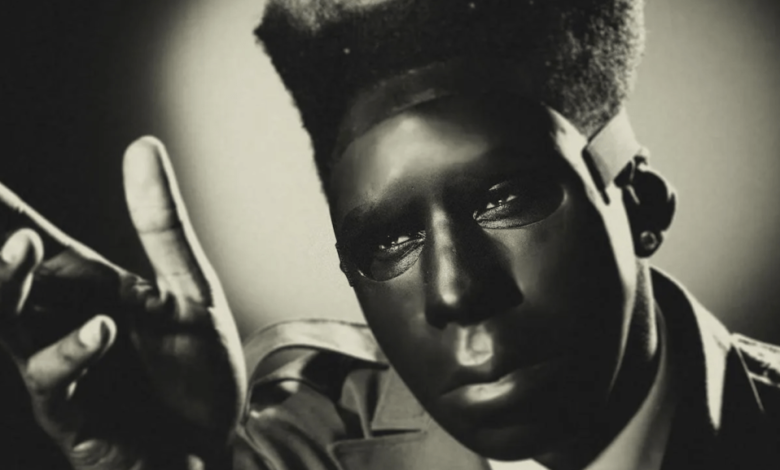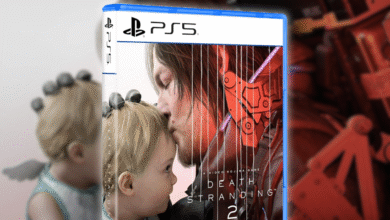Tyler, The Creator’s ‘CHROMAKOPIA’: Key Takeaways From The Album

VIBE runs through some highlights from Tyler, the Creator’s latest album.

2024 Columbia Records
Tyler, The Creator’s CHROMAKOPIA is finally here, and it’s become abundantly clear that the California-based artist has something to say.
During Tyler’s live listening session a day before the LP’s release, he contextualized what fans would hear on his seventh studio album, with a guileless speech.
“I’m not the guy I was at 20. People are getting older… Folks having kids and families,” he told the Los Angeles crowd at the Intuit Dome on Sunday (Oct. 27). “All I’ve got is a new Ferrari. And it feels kind of weird. I’m gaining weight, I’ve got gray hair on my chest. Life is life-ing… I just wanted to write about what I think about when I’m dolo.”
Tyler would drop his latest work on Monday (Oct. 28) at 6 AM, looking to break the now-traditional release pattern that the industry has come to expect. And when the internet finally woke up, an incredibly bold, honest, messy, and nuanced album awaited them from one of Hip-Hop’s brightest (and oddest) stars.
CHROMAKOPIA is a dense musical experience. If you blink, you may miss a subtle nod to one of his rap heroes or a musical Easter egg from one of his previous Grammy award-winning albums.
As the case for the rest of his discography, Tyler wrote, produced, and arranged all songs, with the artist also spearheading the artistic vision for the work. But what were some of the most essential moments on the album?
VIBE runs down just a few of the key takeaways from Tyler, the Creator’s latest work and what it could mean for him in this new era.
-
We Find Out What’s Under The Mask…

Image Credit: White/WireImage Tyler, the Creator is known for exciting world-building on his albums, so it should be no surprise that the rollout for CHROMAKOPIA received the same treatment.
Videos for “Noid” and “Thought I Was Dead” featured the artist donning a 3D-printed mask created in a slightly altered image of Tyler’s face. The mask in question is theorized to be inspired by Norton Juster’s The Phantom Tollbooth and his character, Chroma the Great—a character who could create color through the use of his orchestra. Tyler’s hair, cut straight down the middle like a lawn mower attacked him, was styled with two pillar-like shapes on both sides of his head in a similar box-like shape akin to Frankenstein’s monster’s head. There’s a lot going on.
Speaking of Frankenstein, the visuals for the album and the cover art both feature an eerie monochromatic aesthetic historically associated with the golden era of cinema—or, more specifically, horror films. The videos rarely find him removing his mask, and when he does, the scenes usually involve him speaking on or showing some serious sh*t. For example, the video for “Noid” finds the rapper without his mask when he’s rhyming about possibly getting a woman pregnant and getting trapped with a baby—foreshadowing the standout song, “Hey, Jane,” on his LP. So, what’s behind the mask? Well, we’re glad you asked.
“Take Your Mask Off” is, for all intents and purposes, a deep cut from the LP that may serve as the answer to the posed question. The centerpiece track arrives at No. 9 on the album and clocks in at 4 minutes and 14 seconds, and Tyler wastes no time urging himself and unnamed individuals to live their truth.
The first verse addresses someone in a gang, the second verse speaks to a trifling pastor, the third verse articulates the story of a stay-at-home wife, and the fourth verse, well, that one is a bit more tricky.
On first listen, it sounds as if Tyler is talking greasy to potential peers in the industry, calling the individual out for having a failed clothing line, not having their music charting, and even trying to cover up their hair loss while struggling with anxiety. However, as the song continues, the lines become more unclear, as the person hiding behind the mask could be Tyler struggling with accepting his real life. “I hope you find yourself,” he pleads. “I hope you take your mask off.”
It’s from this moment that every other topic branches from. The question of “What’s behind the mask?” is essential during an album that seems to find Tyler wandering through an intense semi-mid-life crisis, looking for answers in color and clarity.
[youtube https://www.youtube.com/watch?v=Qer3lwd5hyA?feature=oembed&w=500&h=375]
-
Tyler Is Thinking About A Lot

Image Credit: Schaben / Los Angeles Times via Getty Images And it may be that search for clarity that gives us this new version of Tyler: he’s getting older, and there is a lot on his mind. CHROMAKOPIA is littered with bars that paint an emcee in the throes of an early mid-life crisis.
Scattered about Tyler’s new world, we have tracks about the pressures of fame and paranoia (“Rah Tah Tah,” “Noid”), marriage and mortality (“Darling, I”), potential fatherhood and anxieties of raising a child (“Hey Jane”), self-loathing and skin prickling existentialism (“Tomorrow”), and much more. If Call Me If You Get Lost was Tyler, the Creator taking a victory lap in his Fiat 131 Abarth Rally and stunting with his Grammys while on vacation, then CHROMAKOPIA is the all-too-familiar post-vacation syndrome.
MedicalNewsToday has defined PVS as the “negative emotions or depression people may experience when returning from vacation.” So, let’s take another look at CMIYGL, which was a flashy, colorful excursion around the most beautiful destinations in the world on yachts and expensive cars, celebrating mixtape culture and success.
Then you have CHROMAKOPIA: a world of uncertainty and consistent contradictions, reminiscent of the central character Tyler created on IGOR—processing his world as a now 33-year-old man in a state of flux and trying to stay happy despite it all.
-
Student Of The Game

Image Credit: Boyko/Getty Images For Kenz But amid Tyler’s search for meaning as an adult, there is still the “I love this music sh*t” Tyler, still looming large over the body of work.
He displays his influences through a litany of samples working as musical references, Easter eggs for those immersed in the world of music as much as he is, or for the folks looking to dive a little deeper.
[youtube https://www.youtube.com/watch?v=1DZXtY8W-h0?feature=oembed&w=500&h=375]
“Darling, I” serves as the prototypical Tyler, The Creator fan-out moment as the Cali native blends a slew of his biggest heroes into one bop. The track includes samples from Q-Tip, Missy Elliott, and Busta Rhymes’ “Vivrant Thing (Violator Remix)” and Snoop Dogg and Pharrell‘s “Drop It Like It’s Hot,” creating a flirtatious and sweet ode to having multiple lovers.
“Sticky,” which samples a song some would consider a deep cut in Young Buck’s “Get Buck” and James Brown’s uber-popular “Get Up Off That Thang,” sampled in over 400 songs, including Tyler’s Goblin cut “Fish,” celebrates one of the illest Hip-Hop traditions as a posse cut.
[youtube https://www.youtube.com/watch?v=GtUVQei3nX4?feature=oembed&w=500&h=281]
Looking outside of his influences and into his love for musicianship, Tyler employs samples across genres to build CHROMAKOPIA’s soundscape.
“Summertime” by Rosinha De Valencia serves as the main production for Tyler’s existentialist meditation, “Tomorrow.” “Take Your Mask Off,” one of the strongest songs on the album, is powered by People’s Pleasure’s groovy and sensual “A Feeling Inside,” with various references to the song made by Tyler throughout his verse as he dismantles various maks in society and within.
But even deeper than chords and samples, there’s the feeling. CHROMAKOPIA is full of that feeling of an artist who gives a f**k, with sounds that call to mind other artists who care. “Noid” sounds like the perfect marriage between Kanye West‘s Yeezus era and N.E.R.D’s Seeing Sounds moment—distorted vocals, distressed lyrics, and tone, complete with electric production. Tyler sounds as if he’s paying homage to Lil Wayne with his delivery on “Sticky” and “Rah Tah Tah” includes odes to Missy Elliott in more than just the title that sounds like a lyric from the legend’s “Work It.”
Class is in session, and Tyler, the student, has done his homework.


-
Bonita Smith Gets Her Just Due

Image Credit: Winter/Getty Images for The Recording Academy As Tyler, the Creator tells the story of himself and his new character, Saint Chroma, savvy listeners will notice that a voice note flags important milestones on the album. The woman speaking in the voice notes is none other than Bonita Smith giving her son, or the character, life lessons. Smith encourages chasing dreams, safe sex, not lying to women or potential lovers, and demanding to never let anyone “dim your light.”
The story then becomes increasingly personal and relative to Smith’s journey in the song “Like Him.” The song kicks off with Bonita talking to the rapper about his estranged father. She recalls how he looks just like his father, rattling off all of his features that look like carbon copies.
Tyler then unleashes a sentimental plea to her mother, pondering in song whether he looks or acts like his father. He compares his relationship with his dad to “chasing a ghost,” running after something or someone that feels nonexistent.
[youtube https://www.youtube.com/watch?v=OdRB1pwDRwA?feature=oembed&w=500&h=281]
Day one Tyler fans will remember how many times he has mentioned his father throughout his discography, often disparaging him with profanities for leaving him and his mother. So, the song’s plot twist should come as a bit of a surprise as it reaches its climax.
Bonita Smith’s voice reappears, more lowkey and melancholy than her usual bombastic self, apologizing to Tyler for keeping him away from his dad. She reveals it wasn’t his idea to be a deadbeat father and that he actually wanted to be in Tyler’s life. Rather than what he was led to believe about his dad, Smith admits that it was her fault for keeping Tyler away from his dad and ultimately straining that relationship.
The various songs throughout Tyler, the Creator’s discography mentioning his dad begins to hit differently with this major bit of information provided to us. And as a result, Smith finally receives closure on something that appears to be weighing on her heart for a while.
[youtube https://www.youtube.com/watch?v=1lcWhADEX-E?feature=oembed&w=500&h=281]


